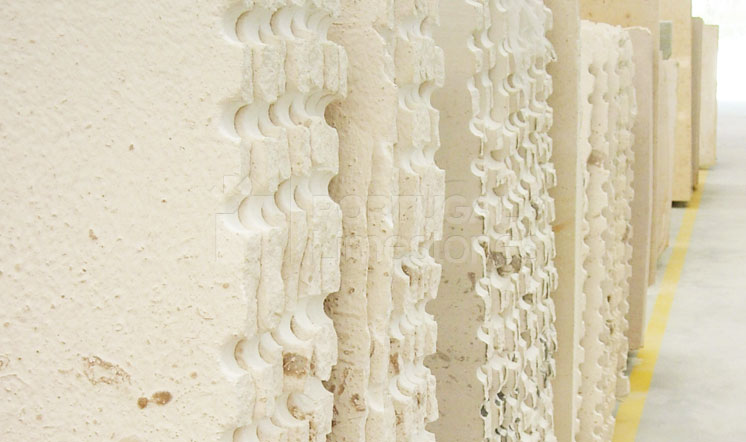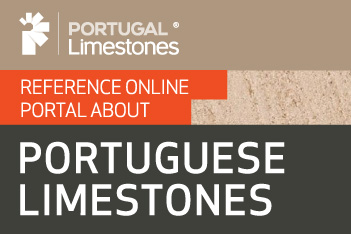Blog
Podcasts
CALL US! +351 967 814 650(Call to national mobile network)info@portugalimestones.com
Blog
Podcasts

We introduce you here in podcasts format to the top 3 Portuguese limestones, which are currently having the most demand, supply for projects and overall market share. These 3 could be consider today the main players in the market in terms of Portuguese light colored limestones.
The Moleanos is a Portuguese limestone that is extracted by a dozen quarries located in the area around the village with the same name as the limestone: Moleanos. Moleanos lies at the footsteps of Serra Aires e Candeeiros Natural Park, the most important limestone extraction centre of Portugal.
The Moleanos limestone has a light beige color, presenting fine to medium grain and a very uniform background. It is the color consistency of this limestone that in fact made it so popular. Its main variations depend on grain structure (which can be fine or medium), as well as color (with beige as the most representative variation, but a blue to light grey colored variation also available and with growing demand). Finally, the Moleanos may present a mixed color variation, called the Moleanos Mix, blending beige and blue in the same stone.
The Moleanos is a type of natural stone known for its endurance and versatility. Due to its hardness, large availability and color consistency, it has been widely used on numerous applications. It is very common to find Moleanos limestone on both interior and exterior applications, such as flooring or paving, as well as on wall cladding. The Moleanos is also a preferential limestone used on interior decoration, such as staircases, fireplaces, bath design and more.
The Moleanos has been for many years the most well-known Portuguese limestone and a reference limestone in the world. It has a well established market, being found pretty much on any stone catalogue as a reference beige limestone, from Europe to North America, Asia or the Middle East, where demand for this kind of limestone is consistent.
The Moca Cream is a beige colored limestone from Portugal that has gained a considerable reputation in the past years, and is today a reference beige limestone in the industry.
The limestone is explored around the area of Alcanede, in Portugal, by several quarries with medium dimension. Due to the unique parallel beige colored vein, the Moca Cream basically has no direct competitor at the international level with the same relevance, quality and market availability.
This is a fairly uniform type of limestone, presenting a consistent beige color and darker brown grain. But what makes this limestone so unique is its parallel vein that runs along its surface. The Moca Cream variations may present fine to medium or thick grain, as well as variations in terms of vein orientation, which can be fairly straight and parallel, or show a more irregular vein.
All these variations can also be supplied with a cross-cut orientation, meaning that it shows no vein, but instead clouded areas. Although with less demand, this is an option in terms of supply.
The Moca Cream limestone is synonym of exterior cladding applications. It is on this type of application where this unique bege limestone has found its fame and glory, and is mostly used. Today, we could find hundreds of exterior cladding applications using Moca Cream and the limestone is normally considered as a main reference limestone for cladding use. Additionally, the Moca Cream limestone can also be found on some low traffic flooring, wall coverings, stonework and diverse masonry.
The Moca Cream is a well-established limestone, with a solid market throughout the building and decoration markets. In addition of China, which represents the largest import market for blocks, the Moca Cream limestone is extremely popular in the Middle East for cladding projects, but also North America and Europe.
Due to its large reserves, competitive pricing and high selection, this is a limestone that will continue to be a reference beige limestone for years to come.
Fatima is one of the hottest limestones in Portugal at the moment, which has seen an incredible growth in demand in the past few years. It is today one of the most relevant export-oriented limestones in the country.
The Fatima limestone first came to the market as a marginal limestone with limited supply. At first, it was considered a modest alternative to the well-known Moleanos limestone. With the development of some large quarries, blocks extraction increased considerably, flooding the market with a range of selections. The Fatima is today, a very respected limestone.
This is a white colored limestone, tending towards light beige, showing fine to medium grain and quite uniform background. It presents a very uniform structure, but some occasional thin calcite lines and some darker brown spots. The Fatima is today one of the most uniform limestones in Portugal.
Its variations depend on the grain structure and wether it shows a vein cut or cross cut structure. There are also some variations showing a bluish color and some color mix. There are numerous variations of this limestone, but the most relevant ones would be the Fine grain, which shows a very delicate structure and quite uniform background and color. There is the Medium grain variation, also known as Classic, which presents a medium grain structure, slightly darker beige color and a less refined look. Finally, there is the Vein-cut variation, which shows a beautiful parallel vein that contrasts with the typical grain structure of the Fatima.
The Fatima limestone has seen an incredible growth in demand in the past several years, mostly due to demand from China mostly for blocks, which still represents the bulk of the export market. However, new markets have been popping up such as the cladding market in the Middle East or Russia, as well as the tiles market in the USA and Canada, and of course Europe, where the limestone has an interesting market.
This is a limestone to consider for years to come, in particular for the alternative selections of the Fatima limestone, which are widely available in quantity.
Sources:
– Mocacream
– Moleanos
– Fatimalimestone

Blog
Recent

A new villa using Moca Cream limestone on cladding is just finished.

The new portal about Portuguese marble is now online!

Qatar is a market with high demand for Moca Cream limestone to

Moca Cream limestone; Exterior cladding; Abu Dhabi

Ataija Blue limestone; Limestone cladding: Moscow; Russia
© 2004-2024 Portugalimestones.com. All rights reserved | Policies | Complaints Book | Developed by: Guzto.com
